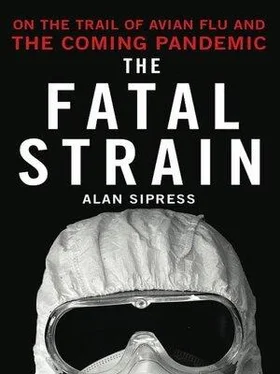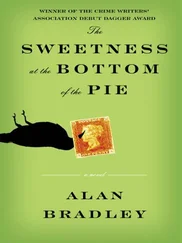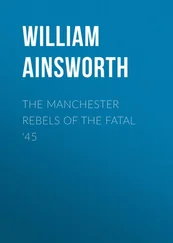A separate team led by Ira M. Longini Jr., a biostatistician at Emory University in Atlanta, ran a slightly different model that also simulated an outbreak in a theoretical population based on data from northeast ern Thailand. These researchers likewise examined the impact of antiviral medicine, limits on human contact, and quarantine and came essentially to the same encouraging conclusions. Their analysis was even more optimistic, finding that no more than 1 million courses of Tamiflu might be needed.
Together, these two studies, published almost simultaneously in the rival journals Nature and Science, offered the WHO a strategy for confronting a pandemic. It was perhaps the only hope, and WHO was quick to integrate the findings into its emergency planning. “No attempt has ever been made to alter the natural course of a pandemic at its start and the behavior of influenza viruses is hard to predict. Nevertheless, the rapid containment approach is considered one of the key elements of pandemic influenza preparedness,” WHO wrote in describing its new strategy.
But the researchers made clear that success rested on some very perilous assumptions. The nature of the virus itself was a crucial variable. If the epidemic flu strain were good at reproducing itself, say for instance if each sick person on average infected at least two others, containment would be unlikely. If, however, the strain were less contagious, with each sick person infecting fewer than two others, chances of checking the disease would be better.
Success depended equally on the speed and effectiveness of the response. Ferguson’s team stressed that health authorities would have to almost instantly recognize the initial case of an epidemic strain and detect most of the subsequent ones. They would also have to identify nearly everyone who may have had contact with the victims, including relatives, schoolmates, work colleagues, and anyone else who had ridden in the same bus, shopped together in same market, eaten in the same restaurant, or prayed in the same mosque, temple, or church, and then get Tamiflu into their hands. The drugs would have to reach an overwhelming majority, preferably more than 90 percent. Longini’s group concluded that containment could only work if “the stockpile were deployed at the source of the emerging strain within two to three weeks of detection.” Any longer and the highly infectious virus would breach the containment zone, confronting the world with an unstoppable epidemic.
WHO’s emergency containment plan incorporated this narrow window, stressing that success depended on mass administration of antiviral drugs within three weeks of the “timely detection” of the first case of this new epidemic strain. A twenty-day supply of Tamiflu would have to reach 80 percent of the targeted population, defined as everyone within at least three to six miles of every detected case, or between ten thousand and fifty thousand people in each area at risk. This would require a massive global undertaking to tap international stockpiles of Tamiflu, airlift the drug into the country, ship it to the hinterlands, and distribute it among the locals. (If the outbreak occurred in a city, such efforts would be pointless. The population density would offer so much dry tinder to the virus that a global conflagration would be unavoidable.)
WHO would rely heavily on the government of the stricken country to quickly detect and honestly report any suspicious outbreaks, initiate the containment effort, and then efficiently transport antiviral drugs to the affected area, no matter how remote. Movement in and out of the containment zone would be sharply restricted. Cooperation from the community would be essential. People would have to stay put, stay home, and take their medicine as prescribed. The sick would be isolated, those exposed to them quarantined. Lab testing of their samples would be crucial for tracking the evolution of the outbreak and calibrating the response. To succeed, this highly disciplined operation would have to last a month or more. “It will require excellent surveillance and logistics mechanisms as well as an ability to ensure compliance with policy directives,” WHO acknowledged.
The power of the computer simulations was awesome, and the chances they promised humanity to dodge a pandemic were previously unimaginable. But what would happen when they collided with the realities of Asia?
In the weeks before Dowes was tracked to his mountain hideaway in May 2006, he had watched sickness burn through his family. It had taken his older sister, his younger sister, and three of their children. His own ten-year-old son had held on longer than most. Dowes and his wife barely moved from the boy’s bedside, but eventually, after suffering eleven days of fever and ever-greater difficulty breathing, he, too, succumbed.
The members of this Sumatran family had perished despite the efforts of the best hospitals in the island’s main city of Medan, the third-largest in Indonesia. Though overseas laboratory analysis in Hong Kong had confirmed the cause was bird flu, Dowes did not believe it. When his relatives took antiviral drugs as prescribed for bird flu, they only got worse. When they gave blood to be tested for the virus, they only grew weaker. Nearly everyone who entered the hospital was fated to die, not to survive. So when Dowes fell sick two days after his son’s death, he decided to make himself scarce.
The outbreak in his family had already attracted international attention because of the cluster’s size. The WHO had sent Uyeki to Indonesia along with the agency’s premier epidemiologist, Dr. Tom Grein. An intrepid German investigator, Grein had repeatedly responded to some of the world’s most terrifying outbreaks, including Ebola and Marburg epidemics in Africa and mysterious clusters of respiratory disease in remote areas of northern Afghanistan and southern Sudan. He and Uyeki had worked together before and were familiar with each other’s routines.
When Dowes fell ill, WHO’s flu specialists surmised he was another link in an unprecedented chain of human transmission. Now his disappearance was setting off warning lights well beyond the islands of Indonesia. He was on the move and potentially contagious with what seemed to be the most transmissible strain of the virus yet. This was the way epidemics started. Indonesian authorities put out a bulletin to local health officers: Find Dowes. Uyeki and Grein had reached Sumatra the very day he went to ground. They joined the hunt.
Dowes and his family had rented a public minibus to smuggle him even deeper into the wilderness. They drove along a rough country road that cut through orange orchards, fields of high corn, and glistening terraces of rice. They passed the occasional brick church, onion-domed mosque, and villagers drying tobacco on wood frames set out in their yards. In places, tall brush brimming with wildflowers pressed up against the roadside. The green slopes of Mt. Sinabung beckoned in the distance, its upper reaches in shadow, the lower ones in crisp sunshine. After several hours they reached their destination.
Jandi Meriah is built on the opposing slopes of a slender valley bisected by the Loborus River, which courses through a deep, lush ravine. A bridge connects the two halves, and a dirt and gravel road ascends each side, meandering through the hamlet to the fields and orchards above. The villagers grow oranges, durian fruit, corn, chili peppers, and chocolate. But Jandi Meriah is particularly famed in North Sumatra province for its witch doctors.
When Dowes arrived at the small, clapboard dwelling three days after falling ill, he could still walk and talk. He was feverish and coughing badly, but he seemed relieved to be there. The reclusive witch doctor, or dukun in Indonesian, agreed to treat him and said there would be no charge. It is believed that demanding payment is the surest way for a sorcerer to lose his mystical gift, though gratuities like cigarettes are always welcome.
Читать дальше











